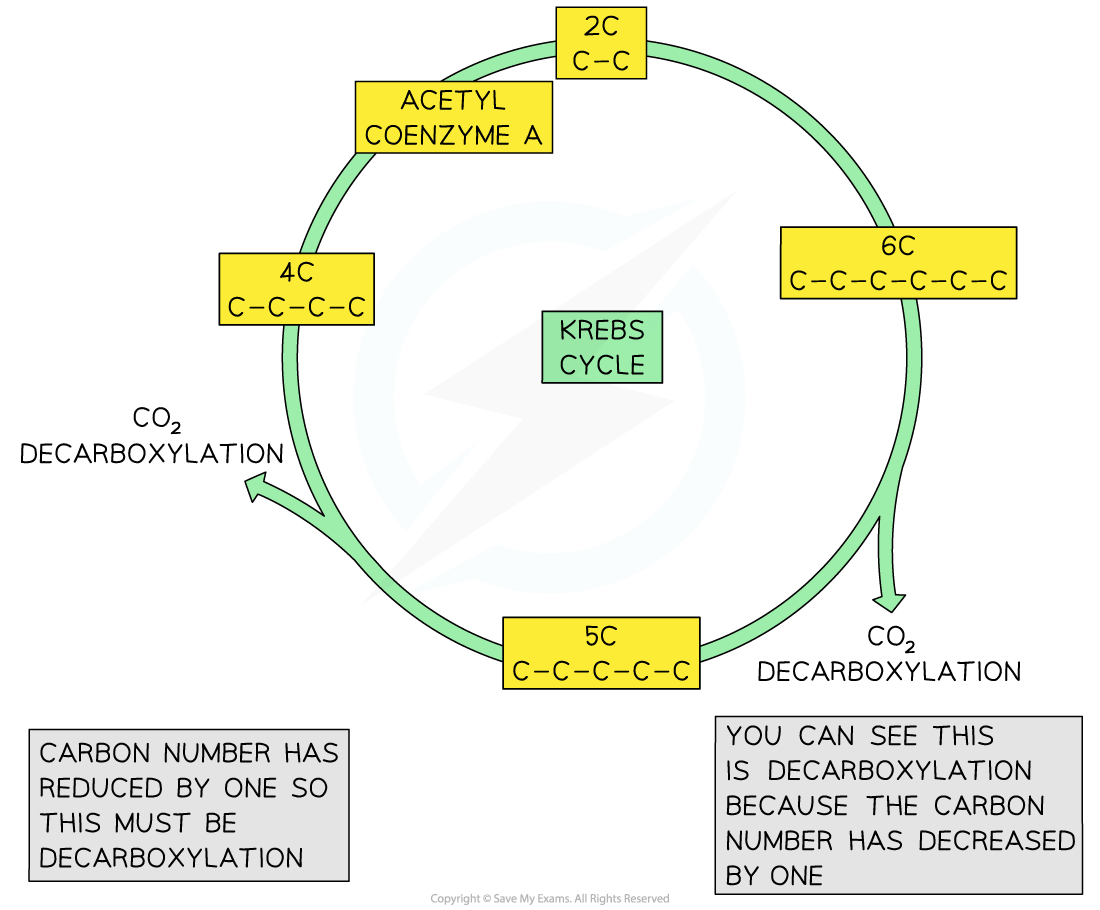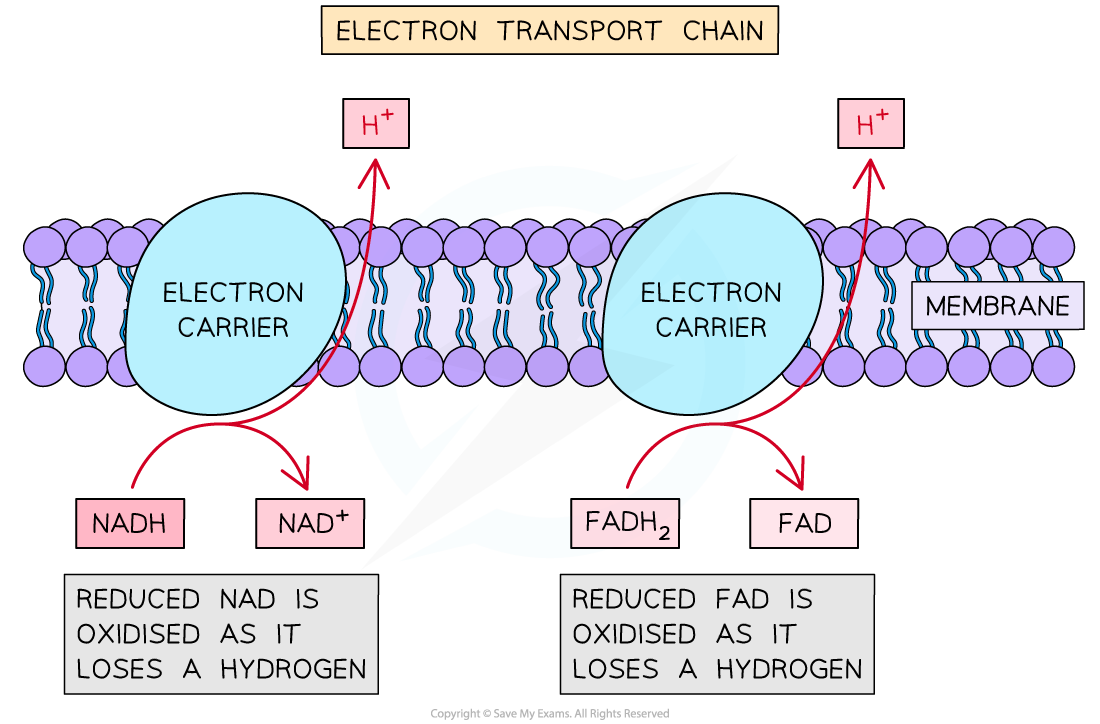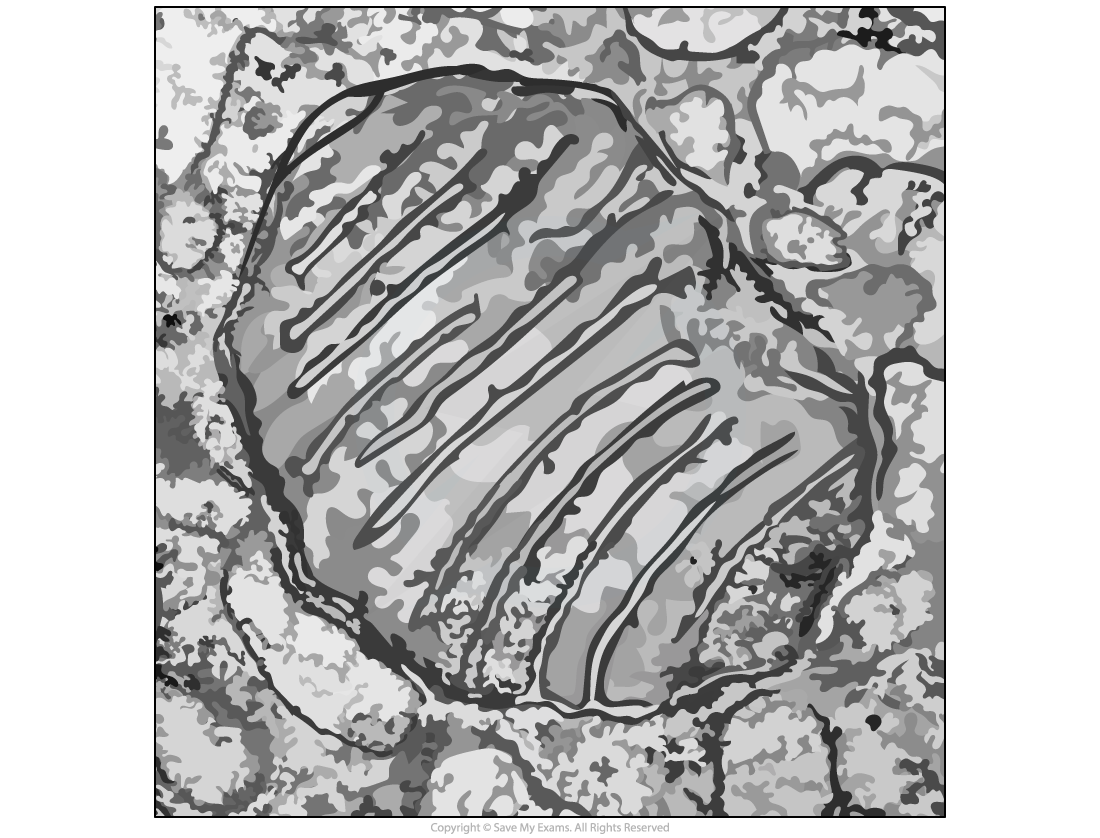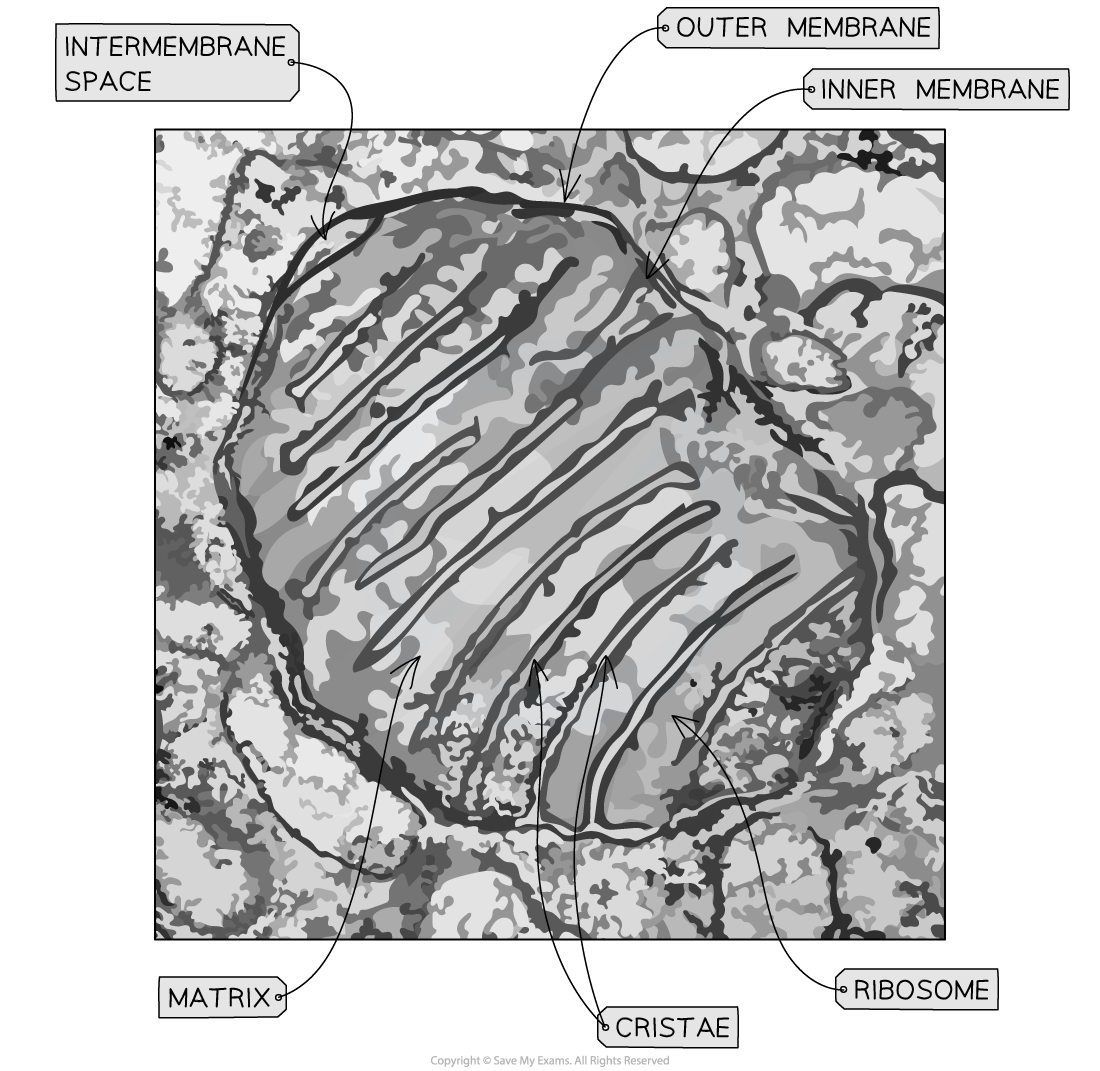Identifying Decarboxylation & Oxidation in Diagrams
- The stages of respiration can be shown and summarised by different reactions which are shown in diagrams involving chemical molecules
- The diagrams can be used to deduce where oxidation and decarboxylation occur
- Decarboxylation is the removal of a carbon from a reaction, that releases carbon dioxide
- Oxidation is either the gain of oxygen, or the loss of electrons or hydrogens

Identifying decarboxylation in aerobic respiration

Identifying oxidation in the electron transport chain
Annotating the Adaptations of Mitochondria
- The structure of a mitochondrion can be investigated by transmission electron microscopy
- Electron micrographs of a mitochondrion may differ in appearance depending on where the cross-section occurs
- The clarity of electron micrographs make it possible to produce a line drawing to show the mitochondrion’s double membrane around the matrix, and the way the inner membrane folds to form cristae
- Typically, mitochondrial drawings should show the following features:
- Usually sausage-shaped in appearance
- Inner membrane contains many internal protrusions (cristae)
- Intermembrane space is very small
- Ribosomes and mitochondrial DNA are usually not visible at standard resolutions and magnifications


Electron micrograph of a mitochondrion, with an interpretive drawing of the adaptations annotated
Worked Example
Label the following structures on the electron micrograph of the mitochondria:
- Outer membrane
- Inner membrane
- Intermembrane space
- Cristae
- Matrix
- Ribosome

